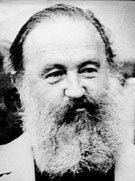Birth name John Sangster Name John Sangster Origin Melbourne, Australia Role Composer | Occupation(s) Musician Genres Jazz | |
 | ||
Born 17 November 1928 ( 1928-11-17 ) Albums Landscapes of Middle Earth Music director Dot and Keeto, Dot and the Koala, Fluteman, Avengers of the Reef, One Man's Road, Marinetti Similar People Don Burrows, Judy Bailey, Keith Scott, Yoram Gross | ||
John sangster hair rare aussie jazz funk
John Sangster (17 November 1928 – 26 October 1995) was an Australian jazz composer, arranger, drummer, cornettist and vibraphonist born in Melbourne, best known as a composer though also a gifted multi-instrumentalist. Sangster worked with virtually every big name in Australian jazz during his career, a list of musicians that includes Graeme Bell, Humphrey Lyttelton and Don Burrows.
Contents
- John sangster hair rare aussie jazz funk
- Judy bailey john sangster and the el rocco
- Professional career
- Albums
- References
Judy bailey john sangster and the el rocco
Professional career
Sangster played trombone with Graeme Bell and his Australian Jazz Band, later taking up the cornet and then the drums. He toured several times with Bell from 1950 to 1955, playing in Australia, the United Kingdom, Germany, Japan and Korea. In the late 1950s he began playing the vibraphone, which he found "combined the percussive qualities of the drums with the melodic capability of the trumpet" (Bisset, 1979). He played with Don Burrows in the early 1960s. Sangster formed his own quartet and experimented with group improvisatory jazz, after he became interested in the music of such musicians as Sun Ra and Archie Shepp. He rejoined the Don Burrows Group briefly in 1967 when they represented Australia at Expo 1967 in Montreal, Canada.
In 1969 Sangster began to work with rock musicians and he joined the expanded lineup of the Australian progressive rock group Tully, who provided the musical backing for the original Australian production of the rock musical Hair. He performed and recorded with Tully and their successors, Luke’s Walnut, throughout the two years he played in Hair. In 1970 he re-joined the Burrows group, this time for Expo 1970 in Osaka, Japan.
In the 1970s Sangster released a series of popular The Lord of the Rings inspired albums that started with The Hobbit Suite in 1973. He was also the composer of a large number of scores for television shows, documentaries, films, and radio slots (including Hanna-Barbera's The Funky Phantom). In 1988, Sangster published his autobiography, Seeing the Rafters. He died in Brisbane, Australia, on 26 October 1995 at age 66.
